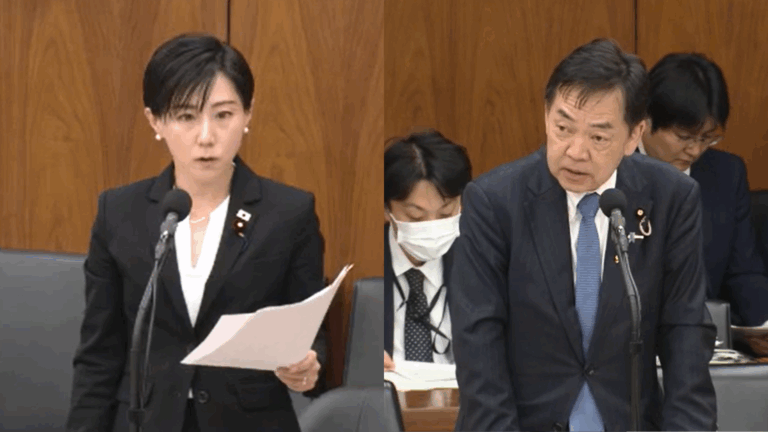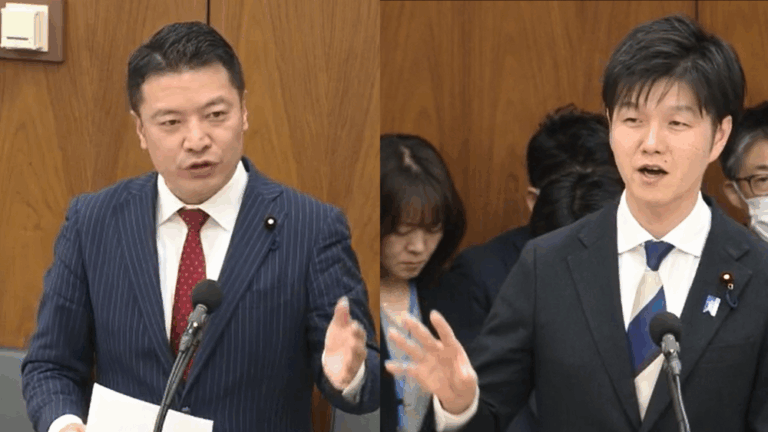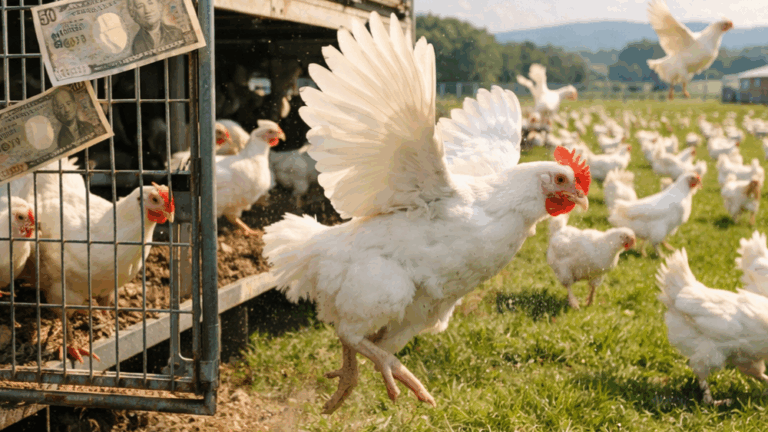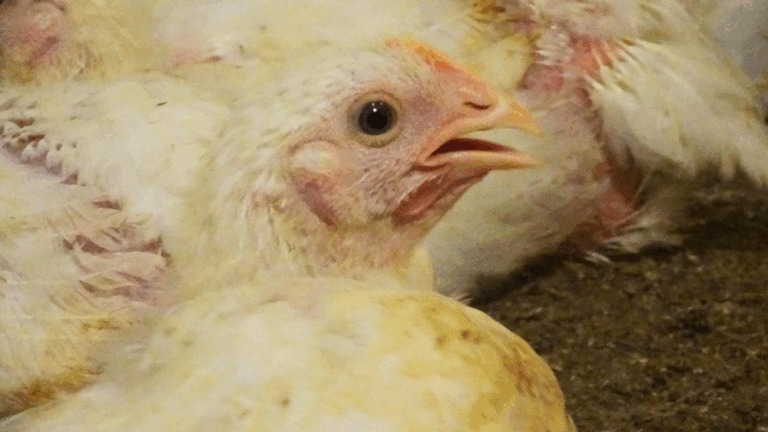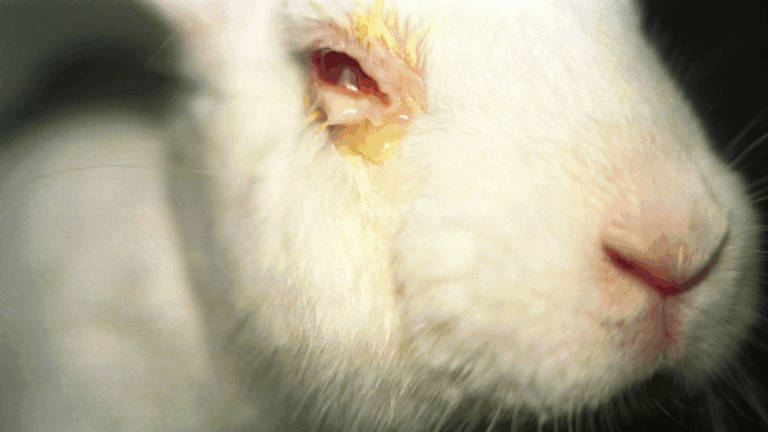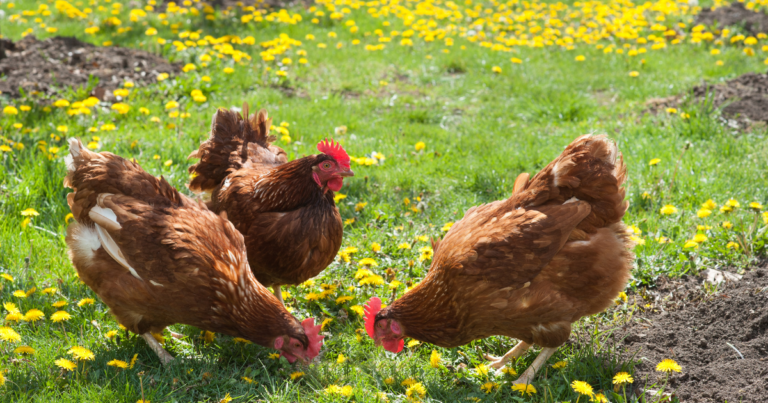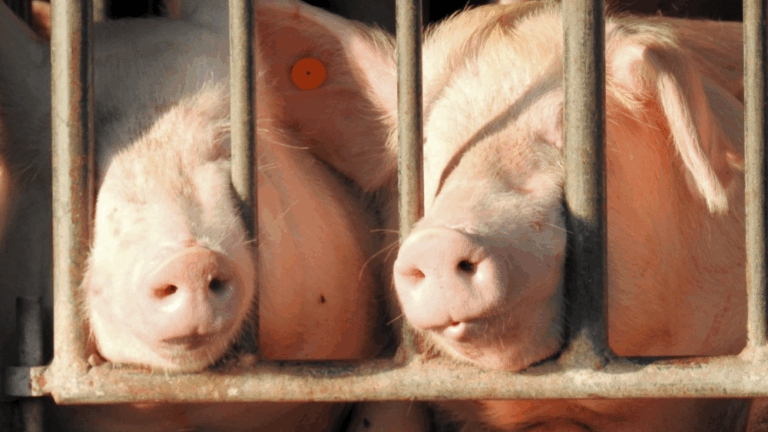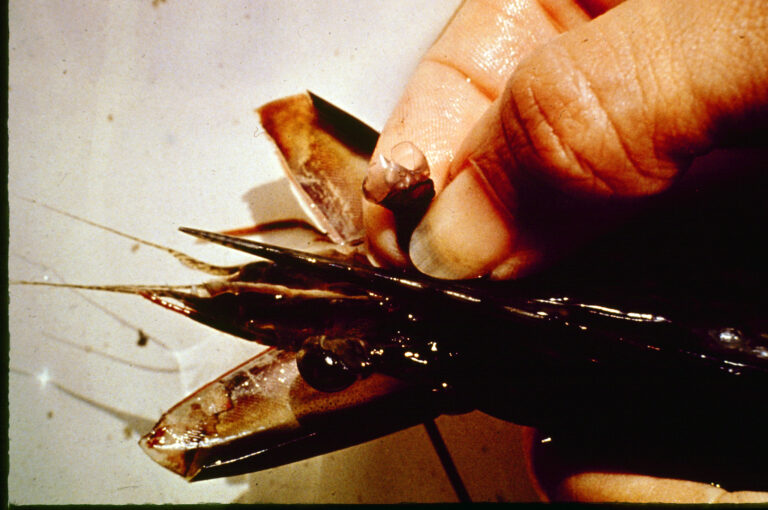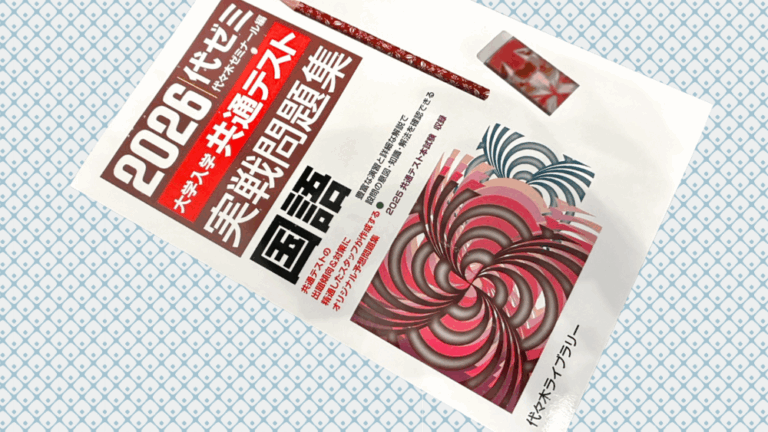Animal welfare is not a new value system, but a unique Japanese culture and traditional value system that Japanese people originally had, which is to take care of living things and coexist with animals. This is what Councilor Yuko Kitano appealed to the Environment Committee on April 25, 2025. She also stated that consideration for animal welfare will “improve the awareness of producers and consumers, create and generate added value for various animal-related industries, strengthen international competitiveness, and economic growth,” and that it is necessary to actively incorporate knowledge from overseas.
Councilor Kitano began by asking Environment Minister Keiichiro Asao what he thought Japan’s view of animals was. As Councilor Kitano stated, Japan’s original view of animals is one that is considerate of all animals, and while the term “animal welfare” is new, the idea is not outlandish.
Unfortunately, Minister Asao only replied that “Japanese people’s views on animals should be diverse,” and when pressed for the minister’s personal view, he gave a vague answer.
In the latter part of the question, he stressed that animal welfare contributes to food safety and people’s health, and also pointed out Japan’s lagging measures against cage-free and drug-resistant bacteria and foodborne pathogens. But the Ministry of Agriculture, Forestry, and Fisheries (MAFF) responded that it was unaware of any scientific findings showing a relationship between husbandry practices and animal immunity.
Councilmember Kitano.
Although the causal relationship between the health of cage-free chickens and that of cage-free chickens is still in the research stage, I think it is natural for consumers to feel that there is a health difference between chickens raised in the sunlight, following their instincts and moving around freely, and birds that are not raised in the sunlight.
He stated. You are absolutely right. Animal welfare is basically raising animals that contribute to their health. It allows them to exercise, strengthens their bones, and builds muscles. There is plenty of scientific evidence for this. The fact that the Ministry of Agriculture, Forestry and Fisheries (MAFF) says that they do not know about it is a very malicious answer.
The Ministry of Agriculture, Forestry and Fisheries (MAFF) states, “We are not aware of any scientific evidence that clearly demonstrates a clear scientific basis for the relationship between feeding methods and immunity,” which means that, to put a finer point on it, they do not know about the relationship with immunity, but there is scientific evidence that cage-free feeding contributes to immunity, for example. However, there is scientific evidence that cage-free food, for example, contributes to immunity.
This paper shows that the intestinal microbiota that contributes to immunity is more diverse in cage-free rearing, which contributes to immunity. This paper also shows similar results. The Ministry of Agriculture, Forestry, and Fisheries (MAFF) has the authority to establish husbandry management guidelines and to assert that diverse rearing methods are good. Nevertheless, it is surprising that they did not have these findings first. Furthermore, the bureaucrats were notified in advance of the questions to be asked at the committee meetings, and nowadays anyone can easily search for and read the papers, and the Library of Congress is just around the corner. Even if the committee had been notified the day before, it is not acceptable to say that they did not know about it. If the Ministry of Agriculture, Forestry and Fisheries (MAFF), which is in charge of providing guidance to producers all over Japan, does not know about it, they should not have said anything about it. If they don’t know, they shouldn’t have to say anything.
I would like to sincerely thank Councilor Kitano for not being misled and conveying the superiority of cage-free after the malicious inducement by the Ministry of Agriculture, Forestry and Fisheries.
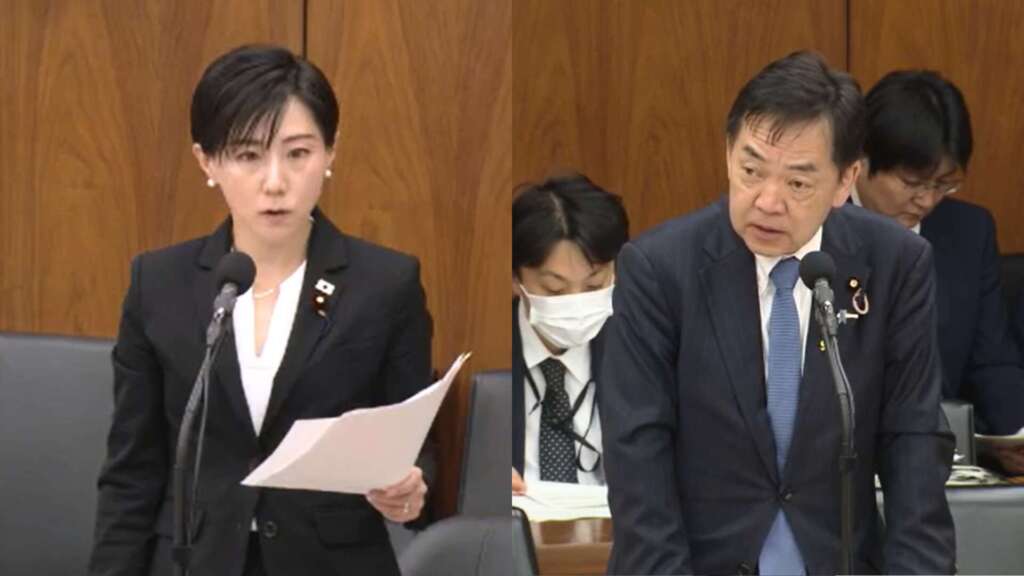
Full text of April 25, 2025 answer (may contain errors due to transcription at the Animal Rights Center)
Next, Yuko Kitano.
Ms. Kitano: Thank you again for the opportunity to ask you a question. I am Yuko Kitano from the Councilor’s Party. I would like to ask a question related to animals, following on from the previous question. Since I asked about the bear problem last time, I believe that there are many opportunities to think about the relationship between wild animals and humans.
In recent years, the promotion of animal welfare, or so-called animal welfare, has been discussed internationally, and Japan has been called upon to promote its introduction. First, Japan already has an animal welfare law, the Animal Protection and Control Law, which was enacted in 1973 through legislation by lawmakers. The Ministry of the Environment’s Animal Protection and Control Guidelines state that it is important to carefully discuss the relationship between humans and animals, taking into consideration the climate and social conditions in Japan, the characteristics of the Japanese view of animals, and the differences between Japan and other countries. The Animal Protection and Management Guidelines of the Ministry of the Environment state that it is important to hold careful discussions on the relationship between humans and animals, taking into consideration the climate and social conditions in Japan, the characteristics of the Japanese view of animals, and differences between Japan and other countries. Let me ask you here. What is the Japanese view of animals, in your opinion? This information is necessary as a precondition for realizing a society in which humans and animals coexist in harmony, so we would like to hear from you.
Minister Asao: In the guidelines you mentioned, the importance of taking into account the characteristics of Japanese people’s views on animals and their differences from those of other countries is mentioned when discussing the realization of a society in which people and animals can coexist in harmony. The Guidelines state that the Japanese view of animals, including the view of animal welfare, has always been diverse, and should be diverse at all times.
In addition, I am aware that the Council, when formulating the guidelines, presented several animal shelters as reference materials based on historical perspectives, etc., although these are only individual ideas and are not to be taken as the Japanese view of animals. In any case, in promoting animal welfare administration, we believe it is necessary to listen to diverse ideas, and to proceed with careful discussions.
Councilor Kitano: Thank you very much. I would like to share with you some very interesting information that I found in the Council meeting, which is in the process of formulating animal protection guidelines, as a reference for Japanese people’s views on animals.
This is a statement by a person named Mr. Shoji, Director of the Animal Protection and Management Office of the Ministry of the Environment. The following is a quote from the minutes of a meeting of the Animal Protection and Welfare Subcommittee of the Central Environment Council held on August 4, 2005. In the case of Japan, animals and humans tend to be regarded as reincarnation, or as equal and continuous beings in terms of biology, whereas in Europe and the United States, there is a strong belief that animals are separate life forms and should be managed by humans. In addition, on May 29, 2006, at the Central Environment Council, the Animal Protection Department, there was a table in the reference material of the draft framework of the Basic Guidelines for the Protection of Animals that compares Japan’s view of animals with that of Europe and the United States. I would like to give you a brief explanation of the table. First, I would like to talk about the relationship between humans and animals in Japan. In the Western countries, the relationship between humans and animals is that they are separate life forms, subordinate to humans, exist for the benefit of humans, and should be managed by humans. I think it is quite reasonable that the Council, which is charged with setting policy on animal welfare in Japan, has tried to sort out these differences in values. It seems that the reference material has since been deleted, but I would like to ask the Minister for his opinion, if not the government’s opinion, on the Japanese view of animals as discussed at this Council.
Minister Aso: Regarding the animalization of the Japanese people, as I mentioned earlier, the guidelines, including the concept of animal welfare, have always been diverse and should continue to be diverse.
I understand that the Council at the time of formulating the animal care plan considered only one way of thinking, and that although these are not the only ways in which Japanese people view animals, some animals were presented as reference materials based on historical perspectives, etc. The point is that Japanese people have diverse views on animals. I believe that the point is that the Japanese view of animals is diverse.
Mr. Kitano: Thank you very much. As the Minister mentioned earlier, when introducing foreign ideas such as animal welfare, the Councilors take the position that it is always necessary to consider whether or not Japan’s own unique way of thinking can be applied directly to our country and what kind of values are typical of Japan. In Shinto, everything is an object of faith, and in Buddhism, all life has a soul. In Buddhism, all life has a soul. When we eat, we say “Itadakimasu gochisosama desu” (Thank you for the food, thank you for the food), and our daily habits of gratitude and respect for all living things have been ingrained in our DNA for generations. This respect for animals and nature was originally part of Japanese culture.
Therefore, I think it would be easier for the Ministry of the Environment to convince the Japanese people of the importance of animal welfare if they were to present their own version of animal welfare that is more in tune with the Japanese way of thinking. The Japanese people have a disposition to be considerate of all things, rather than to create new values. I believe that this will raise the awareness of producers and consumers, create and generate added value in various animal-related industries, strengthen international competitiveness, and lead to economic growth.
Therefore, we are asking for your confirmation. Article 2 of the Animal Protection Law stipulates the proper handling of animals in consideration of the fact that they are living beings, and Article 7 states that the health, maintenance, and safety of living animals shall be maintained. Do these articles include industrial animals such as cows, pigs, and chickens?
Minister of the Environment Asao: Animals that are life forms as defined in Articles 2 and 7 of the Animal Protection and Control Law include industrial animals such as cattle, pigs, and poultry that are kept or kept for use in industry and other purposes.
Councilor Kitano: Thank you very much. I understand that industrial animals are applicable. Now I would like to talk to you from the perspective of food safety. This is based on the concept of “medicine, food, and health” or Oriental medicine, which is the idea that we should not rely on Western remedies, but rather try to prevent illness by consuming foods that are good for the body on a regular basis.
In order for humans to stay healthy, exercise, diet, and a stress-free life are important, and at the same time, for domestic animals, such as chickens and pigs, providing a stress-free environment has a positive effect on their healthy growth and immunity, and is necessary to obtain safer and more secure livestock products. We believe this is necessary to obtain safer and more secure livestock products.
In fact, it has been reported that the number of Salmonella bacteria detected in Japanese chicken meat is higher than in other countries where cage-free production is more advanced. We are aware that the introduction of cage-free chicken meat, such as flat-raised chicken, has not yet made much progress in Japan.
According to a private organization, the percentage of cage-free poultry farms is 1.13% in Japan, 100% in Switzerland, and 60% in the EU. We believe that cage-free keeping frees birds from stress, improves immunity, and reduces the use of antimicrobials and vaccines. I would like to know the advantages and disadvantages of cage-free keeping and cage-keeping. We would also like to know if there are any obstacles to animal welfare efforts in the industry.
Deputy Director Sekimura, Minister’s Secretariat, Ministry of Agriculture, Forestry and Fisheries: I will answer your question. There are two main types of chicken use: gauge and gauge-free. The cage system has the advantage of reducing the mortality rate by reducing fighting behavior such as strong hens pecking weak hens, and keeping the hens clean by preventing them from coming into contact with livestock waste.
On the other hand, the gauge-free method allows chickens to move freely on the ground up to the floor level. This increases the amount of exercise they receive, which in turn improves the health of their bones. In this way, each rearing method has its own advantages in terms of animal welfare, and therefore, the Ministry of Agriculture, Forestry and Fisheries allows a variety of rearing methods without limiting them to specific rearing methods. We are not aware of any scientific evidence that clearly demonstrates the relationship between feeding methods and immunity. The Ministry of Agriculture, Forestry and Fisheries (MAFF) has been promoting animal welfare by issuing Director-General’s Notices, etc.
Councilor Kitano: Thank you very much. I understand that consideration of animal welfare in the livestock industry is costly and that there are advantages and disadvantages of cage-free chickens. The causal relationship between the health of cage-free chickens and that of cage-free chickens is still in the research stage, but I think it is natural for consumers to feel that there is a difference in the health of chickens that are raised in the sunlight, follow their instincts, and move around freely, and those that are not raised in the sunlight. In addition, I believe that the reason why gauge-free chicken is being promoted in other countries is not only from the viewpoint of animal welfare, but also from the improvement of food safety and the branding that accompanies it.
If there are initiatives that are considered good for improving the image of Japanese livestock products and strengthening future exports, we should actively incorporate knowledge from overseas. While costs are important from the perspective of sustainable management, if we can establish Japanese-style animal welfare by returning to our country’s original view of animals and aiming for harmonious coexistence with humans, we can create new added value for Japan, promote Japan’s primary industry, and communicate it to the world as a Japanese brand. This is the way to promote the Japanese brand. We would like to promote the image of the Japanese brand, and I have heard that the percentage of domestically produced chickens with drug-resistant bacteria is particularly high. I would like to ask you about the use of drugs for industrial animals.
So you are saying that bacteria appear that are ineffective with the use of drugs. These are drug-resistant bacteria. If these drug-resistant bacteria spread to other people, it could affect our lives.
Deputy Director-General, Minister’s Secretariat, Ministry of Agriculture, Forestry and Fisheries: I would like to answer your question. As you mentioned, there is concern that inappropriate use of antimicrobial agents may increase the risk of drug-resistant bacteria, making it difficult to treat bacterial infections in humans and animals. For this reason, Japan formulated the Drug Resistance Action Plan in 2016, and has been promoting measures against drug resistance in cooperation with relevant ministries and agencies.
In the field of livestock, based on the results of the food health impact assessment, the Ministry of Agriculture, Forestry and Fisheries (MAFF) is clarifying the order in which antimicrobial agents should be selected for treatment, and is also promoting the promotion of thorough sanitation and profitability management, reduction of antimicrobial use by promoting the practical use of effective vaccines, and the promotion of appropriate use of antimicrobial agents among people in the livestock industry. In addition, we are promoting the spread of awareness of the appropriate use of antimicrobials among livestock breeders and others. We will continue to steadily implement these measures and promote measures against drug resistance in the livestock sector in cooperation with related parties.
Councilor Kitano: Thank you very much. I have learned that various efforts are being made to prevent the spread of drug-resistant bacteria. These efforts can be said to demonstrate a certain level of safety for livestock products produced by livestock farmers in the environment, so I hope that they will be more active in this area. On the other hand, there are also livestock farmers who are trying to overcome resistant bacteria by drawing out the immunity of their livestock products without using any medicine.
I have more questions, but I would like to cut them down and just share my thoughts. I think that cage-free animals will be increasingly sought after in Japan, but we Japanese have always had a strong sense of respect for animals. It is an unfamiliar word, and it may seem like a new value, but we Japanese have a unique Japanese culture and traditional values that allow us to cherish all living things and coexist with animals. Therefore, I hope that you will continue your efforts to express in Japanese terms, such as “Japanese-style animal welfare” or “Japanese-style animal welfare,” to coexist with animals and protect livestock products.
That concludes my question. Thank you very much for your time today.
